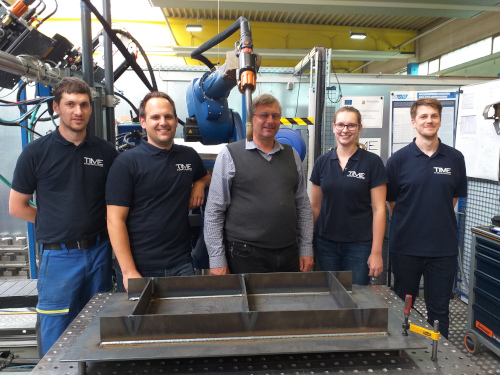DynaWeld at the Technology Institute for Metal & Engineering GmbH (TIME)
The prediction accuracy of numerical simulations can only be convincing if the models used are suitable for the physical processes and the modeling is realistic.
A check can be done on the basis of welding tests. So far, one can find in the literature for verification purposes many simple components such as blind seams on sheet metal or a simple T-joint. Industry-relevant assemblies are hardly found there. DynaWeld has successfully performed simulation comparisons for many of its customers in the past, but these are confidential and shall not be made public. With a common research project, the Technology Institute for Metal & Engineering GmbH (TIME) in Wissen / Sieg, Germany, Goldak Technologies Inc. in Ottawa, Canada and DynaWeld GmbH & Co. KG in Wössingen, Germany, are planning to demonstrate the prediction accuracy of the welding distortion calculation on industrial components. The research project is carried out by all project partners in personal contribution.
When welding the orthotropic plate, all process steps occurring in production are mapped. After tacking, the stiffeners are welded to the base plate. Single-layered and multi-layered fillet welds in horizontal position as well as pendulum welded seams are used. In the project, not only the final distortion is examined, the distortion development is also considered. At five selected points, the deformation that occurres during welding is measured continuously and can therefore be compared with the calculation. The aim of the project is to show that not only the final distortion can be calculated correctly, but also the entire deformation process during welding.
The test procedure is particularly challenging for the robot controller. The large distortion in welding must be taken into account in the path programming of the robot. A challenge that was mastered.

